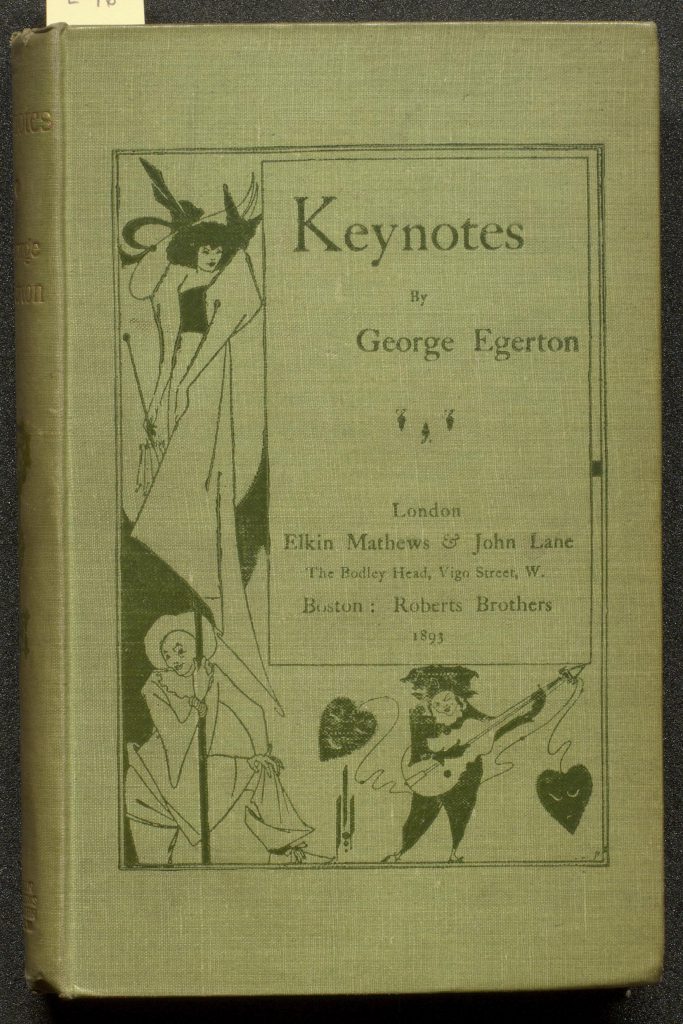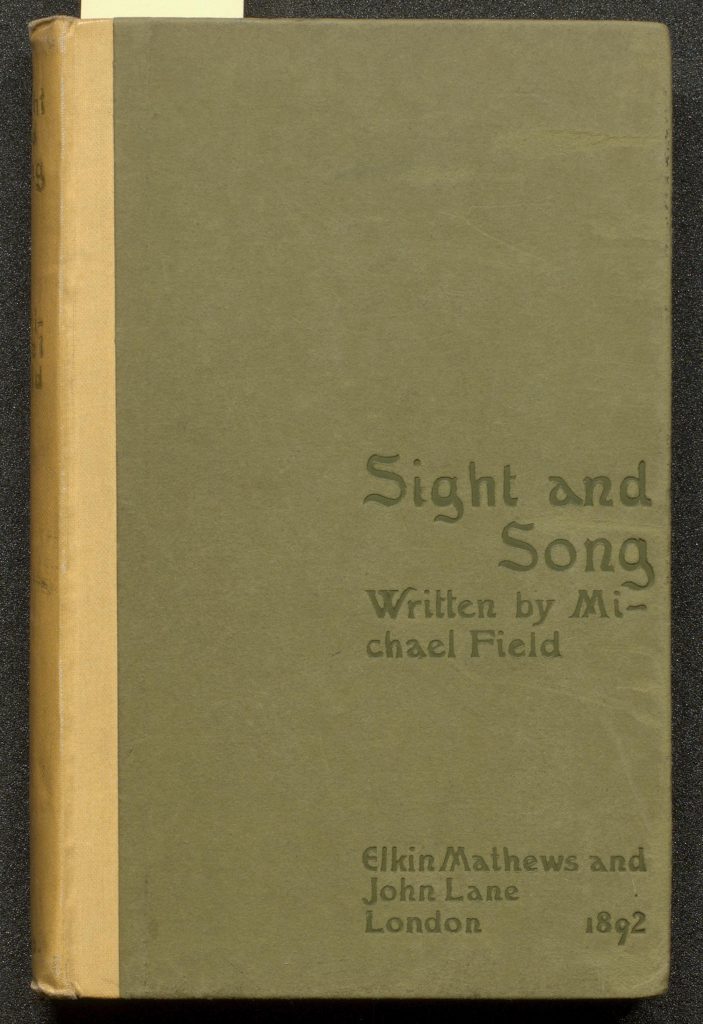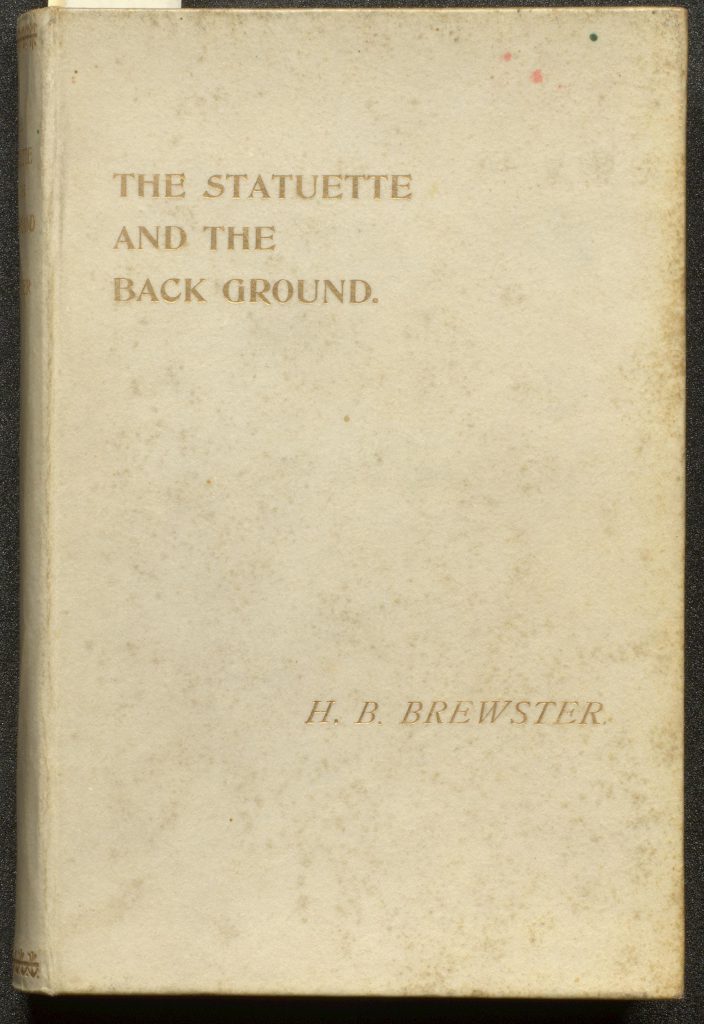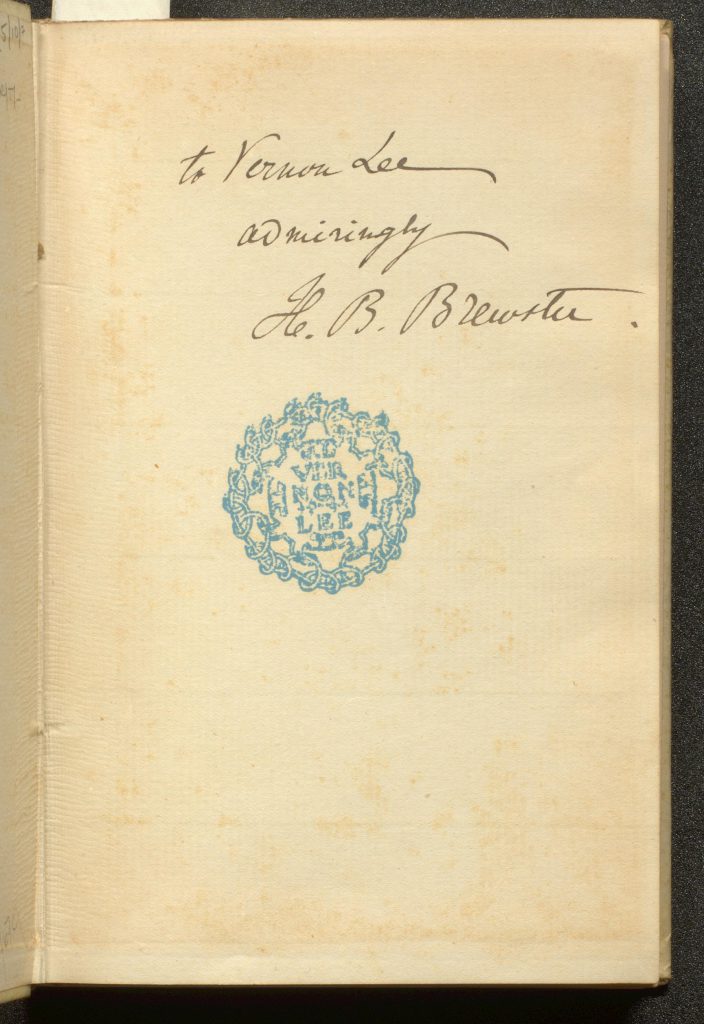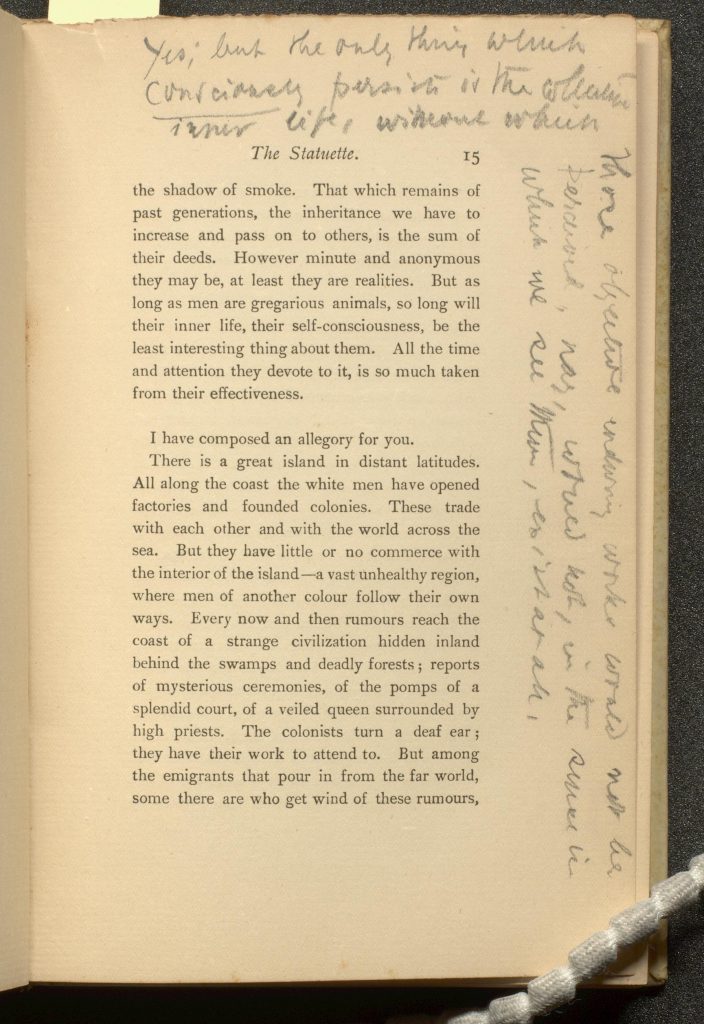Lucrezia (Lexie) Alexandra Zaina (1921-2008) spent nearly fifty years working and studying at the University of Liverpool, and the book collection she bequeathed reflects her personal and professional interests, including Catholicism, Italy, France, the 1890s Society, fin de siècle Aestheticism, and limited edition and private press books in the Aesthetic tradition. A previous post featured Zaina’s copy of Radclyffe Hall’s Rhymes and rhythms = Rime e ritmi (Milan, 1948) which is a good example of many of the collection’s themes. For LGBT History month, this post features books from the Zaina collection by three women writers of the 1890s.
George Egerton
George Egerton (1859-1945) was the pen‐name of the short story writer Mary Chavelita Dunne. Her first collection, Keynotes (1893) was published by John Lane with a cover by Aubrey Beardsley and was instantly successful. She also published stories in The Yellow Book (1894-1897). The Zaina collection has copies of Keynotes (SPEC Zaina E.016), and the later collections Discords (1894: SPEC Zaina E.013), and Fantasies (1898: SPEC Zaina E.014), and T. de Vere White’s edition of Egerton’s correspondence: A Leaf from the Yellow Book (1958: SPEC Zaina E.081).
Michael Field
Michael Field, poet and dramatist, was the joint pseudonym of Katharine Bradley (1846–1914) and her niece Edith Cooper (1862–1913). They wrote collaboratively, initially to great acclaim, publishing as Michael Field from 1884 onwards. Their identity was revealed after they published Long Ago (1889), based on fragments of Sappho. The Zaina collection includes their early Sight and Song (1892: SPEC Zaina E.063), which combines poems with paintings seen on their European travels; the verse drama Borgia (published anonymously in 1905: SPEC Zaina E.078) and Works and Days (1933: SPEC Zaina E.075) edited from their journal. Following her conversion to Roman Catholicism, Bradley’s confessor was the poet and priest John Gray (1866–1934), whose work is also represented in the Zaina collection.
Zaina was a keen-eyed book collector, and her books are often annotated with the place and date of acquisition; some volumes have bookmarks – many from friends in religious orders – or other ephemera tucked between the pages as if she was still in the process of reading them. Her copy of Michael Fields’s Borgia has notes on the author written on a page from her 1982 diary.
Vernon Lee
There is also frequently evidence of previous owners, including one book owned by Vernon Lee, pseudonym of the writer and self-titled ‘aesthetician’ Violet Paget (1856-1935). SPEC Zaina E.005 is an 1896 copy of Henry Bennet Brewster’s The statuette and the background. It has the author’s presentation inscription: To Vernon Lee admiringly, H. B. Brewster and the circular book stamp of Vernon Lee on the endpapers, and Lee’s marginal notes. Also inserted into the book is a postcard to Zaina from the bookseller G. F. Sims, with the message:
Pleased (but not surprised) that you were perceptive enough to snap up this Vernon Lee.
Vernon Lee, remembered today primarily for her supernatural fiction and her work on aesthetics, wrote on history, art, literature, ethics, music, biography and travel, was a contributor to The Yellow Book, and shared with Zaina a lifetime’s involvement with France and Italy. The dozen works by Vernon Lee collected by Lexie Zaina make her the best-represented author in the Zaina collection.
